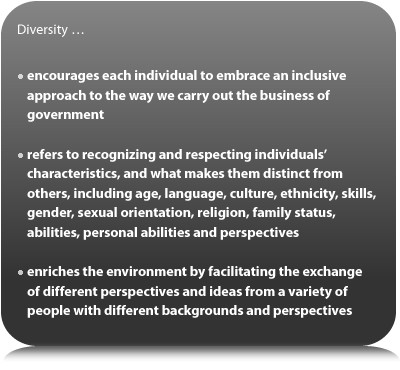Diversity financial definition of diversity
Post on: 13 Май, 2015 No Comment

Diversification
In risk management. the act or strategy of adding more investments to one’s portfolio to hedge against the investments already in it. Ideally, this reduces the risk inherent in any one investment, and increases the possibility of making a profit. or at least avoiding a loss. This may also reduce the expected return on a portfolio, but it depends on level and type of diversification. There are two main types of diversification. Horizontal diversification involves investing in similar investments. Examples include investing in several technology companies or in different types of bonds. Vertical diversification involves investing in very different securities; for example, one may choose to invest in securities traded in different countries, or in both winter clothing and swimsuit companies. Both types of diversification may be as broad or as narrow as the investor chooses. In general, broader diversification equates to less risk and less return. See also: Markowitz Portfolio Theory .
diversification
The acquisition of a group of assets in which returns on the assets are not directly related over time. An investor seeking diversification for a securities portfolio would purchase securities of firms that are not similarly affected by the same variables. For example, an investor would not want to combine large investment positions in airlines, trucking, and automobile manufacturing because each industry is significantly affected by oil prices and interest rates. Proper investment diversification, requiring a sufficient number of different assets, is intended to reduce the risk inherent in particular securities. Diversification is just as important to companies as it is to investors. See also unsystematic risk .
What types of mutual funds provide the best diversification?
Diversification, the notion of not putting all your eggs in one basket, is among the most celebrated concepts in finance. Economist Harry Markowitz even got a Nobel Prize for turning your parents’ oft-repeated advice into mathematical equations. Diversification both reduces investment risk and increases the odds that you’ll earn a decent return over time. A big attraction of mutual funds is that they offer instant diversification. You own a portfolio holding anywhere from hundreds to thousands of stocks or bonds for an initial investment that can be as low as $100. The best way to make sure that your equity mutual fund is well diversifiedand not just stuffed with the latest high flyersis to own a broad-based equity index fund. The same goes for fixed-income securities through a bond index fund that invests in both corporate and government debt. Although the annual management is higher, an alternative is an actively managed balanced fund that owns large and small companies and value and growth stocks as well as fixed-income securities.
Christopher Farrell, Economics Editor, Minnesota Public Radio, heard nationally on Sound Money ®
Diversification.
Diversification is an investment strategy in which you spread your investment dollars among different sectors, industries, and securities within a number of asset classes.
A well-diversified stock portfolio, for example, might include small-, medium-, and large-cap domestic stocks, stocks in six or more sectors or industries, and international stocks. The goal is to protect the value of your overall portfolio in case a single security or market sector takes a serious downturn.
Diversification can help insulate your portfolio against market and management risks without significantly reducing the level of return you want. But finding the diversification mix that’s right for your portfolio depends on your age, your assets, your tolerance for risk, and your investment goals.

Diversification
What Does Diversification Mean?
A risk management investment strategy in which a wide variety of investments are mixed within a portfolio; the rationale is that a portfolio of different investments will, on average, yield higher returns and pose a lower risk than any individual investment within the portfolio. Diversification strives to smooth out unsystematic risk in a portfolio so that the positive performance of some investments will neutralize the negative performance of others. Therefore, the benefits of diversification will hold only if the securities in the portfolio are not correlated.
Investopedia explains Diversification
Studies and mathematical models have shown that maintaining a well-diversified portfolio of 25 to 30 stocks will yield the most cost-effective level of risk reduction. Investing in more securities will yield further diversification benefits, but to a drastically smaller degree. Further diversification benefits can be gained by investing in foreign securities because they tend to be less closely correlated with domestic investments. For example, an economic downturn in the U.S. economy may not affect Japan’s economy; therefore, Japanese investments could do well when domestic investments perform poorly. The average person may not have enough money to diversify properly, but buying shares in a mutual fund can help provide investors with an inexpensive way to diversify. This may explain why mutual fund investing is so popular.














